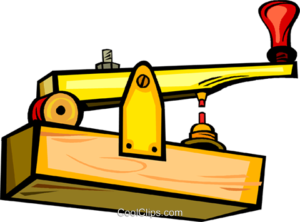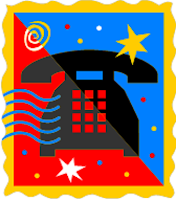Information Quicksand
Download a PDF of this article





|
Distance |
Cost |
? |
It is obvious we are well into the “information age;” so a timely, interesting and useful question is:
What is (are) the current chief obstacle(s) to the flow of information?
If we are to be effective in this stage of the information age, if we are to lead rather than follow, we need to know what will most likely hold us back from seizing the opportunities before us. Who wants to be the last “on the block” to replace their horse and buggy for a car?
If we go back in time we find that, until relatively recently, distance (and later cost) was the chief impediment to the “free” flow of information . . . We read about The Pony Express being a great leap forward (as it certainly was for America). But the very ancient world had solved this problem thousands of years earlier – The Pony Express was just the latest incarnation:
At once the royal secretaries were summoned . . . They wrote out all Mordecai’s orders to the Jews, and to the satraps, governors and nobles of the 127 provinces stretching from India to Cush . . . and sent them by mounted couriers, who rode fast horses especially bred for the king. Esther 8:9 – 10
In effect, information was stymied by distance until the telegraph – which, though limited to short costly messages, was a monumental step forward. As the world began to shrink, the chief obstacle to the flow of information changed from distance to cost. Who doesn’t remember when “Hurry up! It’s long distance!” use to be the cry? For hundreds, and thousands, of years, distance was the chief obstacle to the flow of information and then, for a mere 100 years or so, cost reigned as the major hurdle.
In the last few years, however, the cost of transmitting information anywhere on earth has plummeted until now libraries of information can be transmitted almost instantaneously at virtually no cost.
That leaves the question of “What is (are) the current chief obstacle(s) to the flow of information?” unanswered.The response is that there is one “coin” with two sides – what we must give up and that which we must seize and take hold of. To break down the barriers and obstacles to the flow of information, to take full advantage of the current great opportunities, requires 1) ending dependence on paper and 2) becoming electronically literate.
Paper is the current chief obstacle to the flow of information!
Suggested Action Points to Alleviate Paper and Electronic Literacy
Effective companies are currently (and will increasingly) teach electronic literacy while, at the same time, build “road blocks” to the use of paper. A few of the positive steps (to encourage employee development) and remedial measures (to discourage paper and its “drag” on progress) are:
- Apply and teach the principle of “touch just once” in an electronic information environment. This is becoming increasingly important as the quantity of information continues to dramatically increase ? it is a learned discipline, meaning it can be taught!
- Where, today, is organization and disorganization more evident than in a person’s e-mail in-box? Progressive companies are establishing and teaching good e-mail “filing” protocol – as simplistic as it sounds, poor e-mail filing skills are a major time waster for many people.
EVERYONE should not only touch a message just once, they should also have “Awaiting Reply,” “Open – As Time Permits,” “Open – Immediate Attention” and other user-specific filing cabinets in which each e-mail is placed IMMEDIATELY after handling it the FIRST time! Some e-mails are better pasted to Excel or Word documents. All e-mail becomes SPAM after we have gotten all value from it. Employers who “prime the pump” (get employees started with this training) will reap great rewards.
Closely associated with good e-mail protocols and skills is file-name protocol training ? companies leaving this to the ignorance and whim of each employee are wasting COMPANY time, money and other resources!
- Encourage paperless rather than paper ? when the current photocopy machine needs replacing, downsize DON’T upgrade! Don’t inadvertently encourage photocopying by making copies easy or “pretty.” Don’t purchase another, a single additional, file cabinet! Get rid of in/out (dust) baskets . . .
- Stop making copies of documents that are readily retrievable in your computer system – printing in-house invoice copies, as one example, was outmoded well before the end of the 20th Century.
- Teach employees how to read on-screen rather than routinely printing and storing reports and documents. Learning to read on-screen is like first using bifocals – those who accept the short-term “learning curve” (leading to long-term benefits) will easily adapt while “whiners,” focusing on the short-term learning process annoyance, will not achieve these benefits – they will keep printing copies wasting (more than anything) their time.
- . . .
If people were organized in the paper information age, they can easily adapt to the paperless, electronic, era. The unorganized, on the other hand, will fall further behind in the electronic age as the amount of information dramatically increases – there is more information to process, file and dispose of effectively and efficiently.
Companies (and their employees) who teach and train electronic literacy skills are the ones that will benefit from, rather than be overwhelmed (and possibly over-run) with paper – the current greatest obstacle to the flow of information.